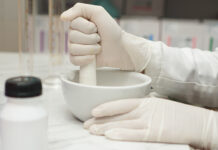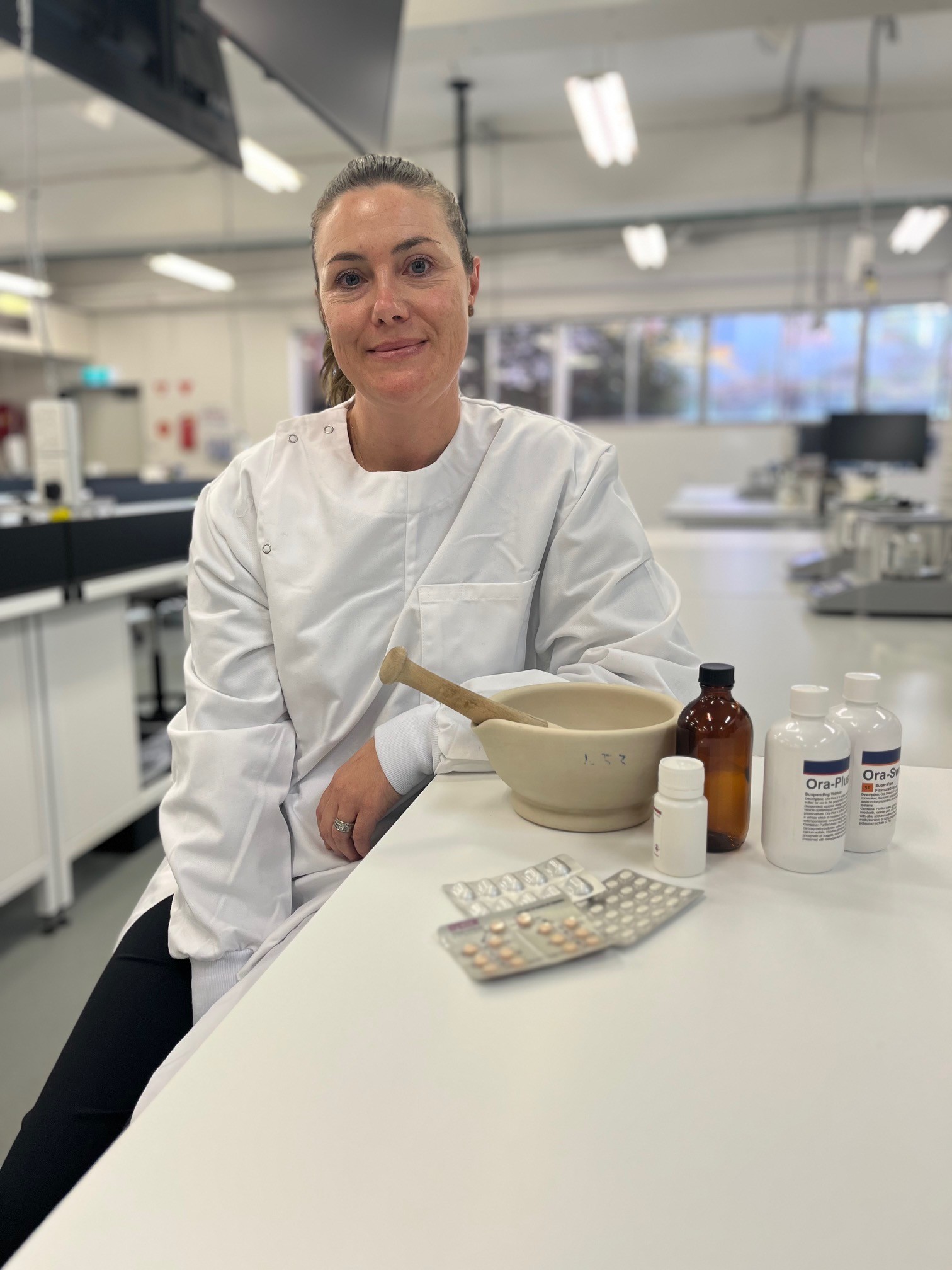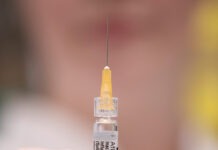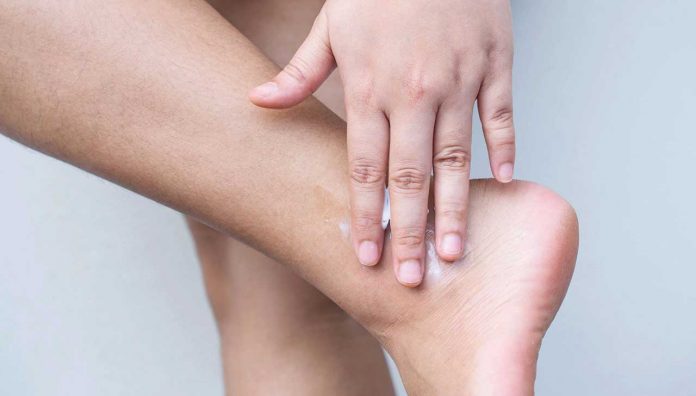Pharmacists can advise patients and demonstrate the use of emollients for the treatment of dry skin.
A consensus statement on the management of dry skin acknowledges community pharmacists are well placed to provide support for people with dry skin conditions.1 So, what do you need to know to provide the best support to such people?
What is dry skin?
Dry skin is a common presentation caused by a loss of water from the stratum corneum, the ‘skin barrier’ that restricts water loss from the body and prevents the penetration of harmful irritants and allergens.1
The stratum corneum comprises tightly packed, well-hydrated corneocytes enclosed within a matrix of intercellular lipids and contains natural moisturising factors (NMF) which attract and hold water in the cells. These natural humectants maintain the skin’s plasticity and prevent dehydration of the corneocytes, which results in inflammation and pruritis.1
The lipids of the stratum corneum are composed of ceramides, cholesterol and free fatty acids. Both the lipid-filled extracellular compartment and the humectant-filled intracellular compartment of the stratum corneum are important for the barrier function and water holding properties of the skin.1
NMF and free fatty acids also help maintain a low pH within the stratum corneum, which maintains the balance formation and degradation of the epidermal barrier. Factors that affect this balance result in dry skin.1 Infants and elderly people are at increased risk, as their skin is thinner and more vulnerable compared with the skin of a young adult with reduced levels of NMF and alterations in the lipid composition of the stratum corneum.1 Children also have a larger body surface area and total body water which results in an increased risk of loss of heat and fluids.2
Dry skin can be a symptom of several skin conditions, including atopic dermatitis/eczema, ichthyosis, irritant contact dermatitis, psoriasis and asteatotic eczema.1 However dry skin often has an environmental cause including weather, heat, hot baths and showers, and harsh soaps and detergents.3
What types of treatments are available for dry skin?
Evidence recommends emollients as first-line therapy for dry skin conditions, with the goal of correcting some of the factors that contribute to dry skin, restoring the skin barrier, and reducing the likelihood of further damage.1 A daily emollient routine is essential for treating and reducing dry skin.4 The words emollient and moisturiser are often used interchangeably, and best practice recommends emollients should be used as an inclusive term for both.4
Emollients include bath oils, emollient washes, lotions, creams, gels and ointments. People with dry skin should be given the opportunity to consider a variety of emollients from the broad spectrum of products available, and to identify the most suitable products for their skin. This choice may be driven by cosmetic acceptability, cream or ointment formulation, oil content, and adjuvant properties such as humectant and/or anti‐itching properties.1,4
There is increasing evidence that aqueous cream BP is not effective, both as a leave‐on emollient and as a washing product. Aqueous cream contains approximately 1% sodium lauryl sulfate (SLS), an anionic surfactant known to be profoundly irritant. Studies have shown that aqueous cream BP weakens the epidermal barrier and actually increases trans-epidermal water loss.1,4
In order to produce oil‐in‐water cream formulations, emulsifiers are required. Aqueous cream was first produced in 1958, and at that time SLS was a standard emulsifier. However, today there are emulsifiers that are less damaging to the skin.1
Emollients reduce water loss from the stratum corneum by providing a surface film of lipid or oil, increasing water in the stratum corneum which restores barrier function. Emollient products can be formulated with additional ingredients like humectants, physiological lipids and antipruritic agents.1,4
Humectants such as urea and glycerol attract and hold water in the stratum corneum and compensate for the reduced levels of NMF and other natural humectants. In atopic eczema there is some evidence that emollient preparations containing urea enhance efficacy, are steroid‐sparing and delay relapse, compared with no treatment.1,3,4
Physiological lipids such as ceramides, cholesterol and free fatty acids are naturally found in the stratum corneum and replenish and restore the intercellular lipid matrix.1,4
Leave-on emollients provide an occlusive effect, trapping water within the stratum corneum and reducing epidermal water loss. Occlusive leave-on emollients include lotions, creams or ointments. Lotions have a short emollient effect and need to be applied every couple of hours.4
Creams contain more oil than lotions but should still be applied every four hours, while ointments trap more water into the stratum corneum and have a longer lasting effect than creams.4
If emollients are prescribed with steroids, ensure they are in a 10:1 ratio to maximise the steroid‐sparing effect.1
What advice should you provide to a person with dry skin? The first step in management is to avoid environmental factors. Washing skin with soap and harsh detergents has been shown to remove skin lipids, extract NMF and increase surface pH of the stratum corneum.1 Educating the person about their dry skin condition and helping them make an informed choice of emollient can help ensure treatment adherence.1
Advise1,4
- Avoid all detergents including soaps, shampoos, shower gels, bubble bath, hand wash including so-called ‘soap-free’ products. Use emollients for washing.
- Avoid long hot showers or baths.
- Emollients can help dry skin conditions and prevent flares of atopic eczema.
- Avoid the risk of slipping with emollients. Use a bathmat.
- Avoid inserting hands or fingers into emollient pots, to avoid microbial contamination of contents. Decant the emollient with a clean spoon.
- Potential fire hazard with liquid paraffin-based emollients. Avoid smoking and naked flames after application.
- Apply emollients several times a day for skin hydration. Leave-on emollients should be applied after washing, before bedtime at regular intervals.
- Store emollients in cool environments.
- Once opened, cream in tubs lasts three months and ointments six months.
- If applicable, leave a time interval of at least 30 minutes between application of topical flare treatments like topical corticosteroids and emollient. The order of application does not matter.
Demonstrate
- Correct application of emollient: smoothed into skin, not rubbed, using a downward, gentle stroking motion following hair growth direction.1,4
- Using sufficient quantities of emollients may reduce flare frequency. Adults require at least 500 g per week and children at least 250 g per week of ‘leave-on’ emollient.1,4
References
- Moncrieff G, Cork M, Lawton S, et al. Use of emollients in dry-skin conditions: consensus statement. Clin Exp Dermatol 2013;38:231–238. At: https://www.ncbi.nlm.nih.gov/pubmed/23517354
- Koyfman A. Why are children more susceptible to dehydration than adults? 2018. At: medscape.com/answers/801012-76327/why-are-children-more-susceptible-to-dehydration-than-adults
- Mayo clinic. Dry skin. 2019. At: mayoclinic.org/diseases-conditions/dry-skin/symptoms-causes/syc-20353885
- Van Onselen J. Management of dry skin conditions. 2013. At: nursinginpractice.com/article/management-dry-skin-conditions





 Beyond the arrhythmia, AF often signals broader pathological processes that impair cardiac function and reduce quality of life and life expectancy.5 Many of these conditions are closely linked to social determinants of health, disproportionately affecting populations with socioeconomic disadvantage. Effective AF management requires addressing both the arrhythmia and its underlying contributors.4
Beyond the arrhythmia, AF often signals broader pathological processes that impair cardiac function and reduce quality of life and life expectancy.5 Many of these conditions are closely linked to social determinants of health, disproportionately affecting populations with socioeconomic disadvantage. Effective AF management requires addressing both the arrhythmia and its underlying contributors.4  C – Comorbidity and risk factor management
C – Comorbidity and risk factor management Warfarin
Warfarin
 Natalie Cooper[/caption]
Natalie Cooper[/caption]

 Professor Michael Kidd[/caption]
Professor Michael Kidd[/caption]








